
Every year, Shia Muslims from across the valley participate in a Muharram procession held on the serene waters of Dal Lake. The event takes place on the 9th of Muharram—this year falling on July 5, 2025—as mourners move from Rainawari to Kaenkech. When the month of Muharram arrives, a unique scene unfolds in Srinagar’s iconic lake.
Dozens of wooden boats—mostly shikaras—drift slowly through the lake’s narrow channels, carrying mourners dressed in black. Known as the Floating Muharram, this waterborne procession has quietly moved across the lake for nearly two centuries, preserving one of Kashmir’s most distinctive cultural traditions.
The boats, decorated with black flags and sacred banners, carry the weight of grief, memory, and resistance. Mourners assemble early in the morning at Rainawari, slowly rowing towards Kaenkech and finally gathering at the Imam Bara of Hassanabad. As the boats glide, mourners beat their chests and chant elegies that echo softly across the water.
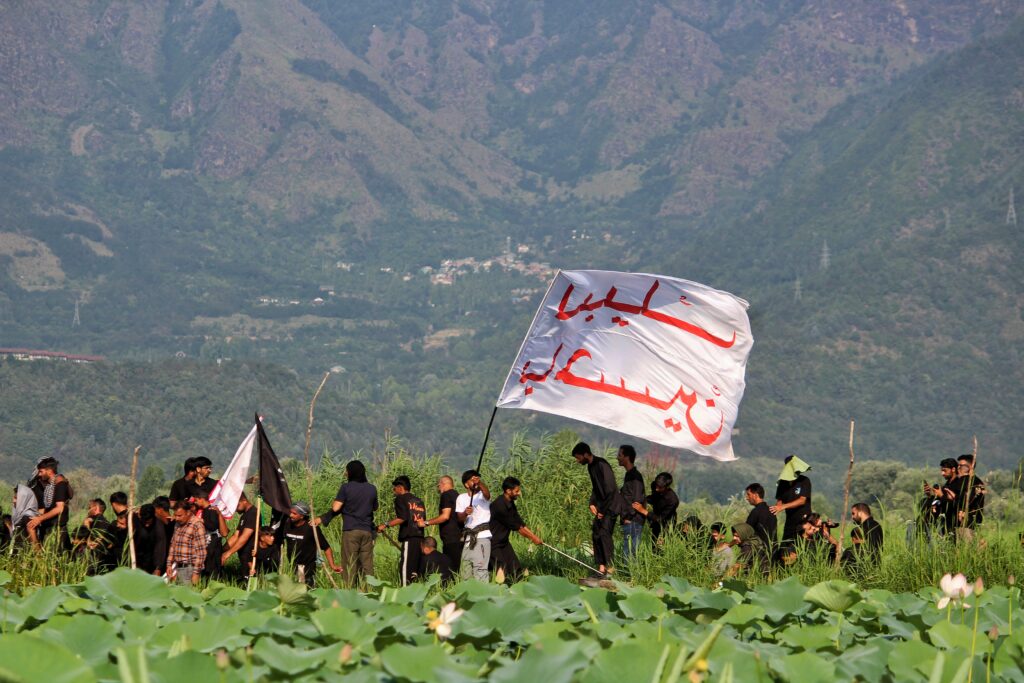
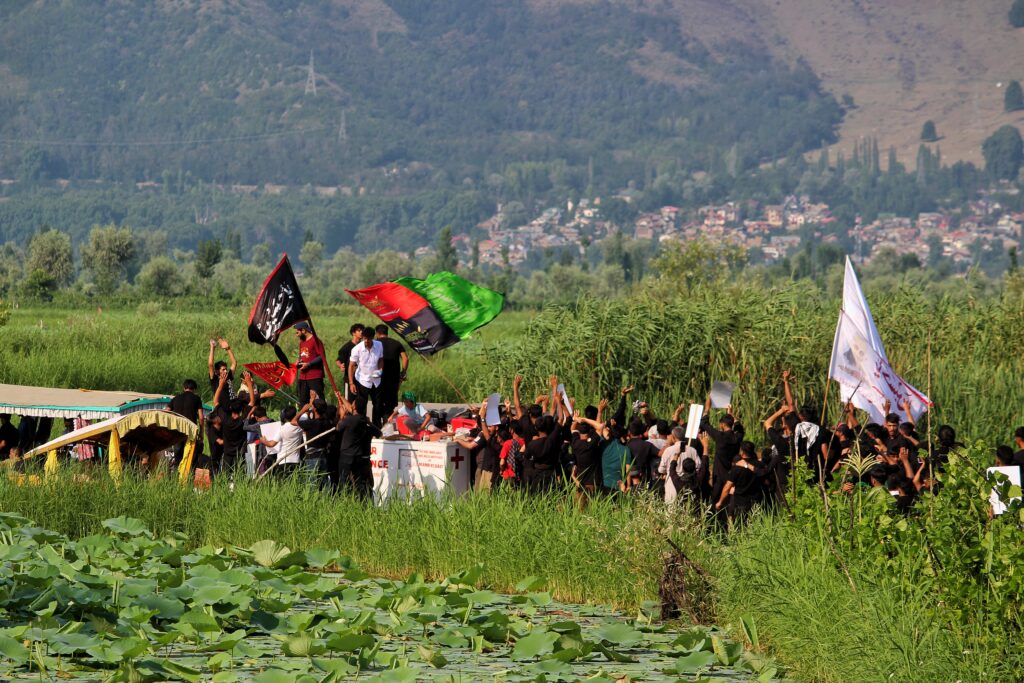
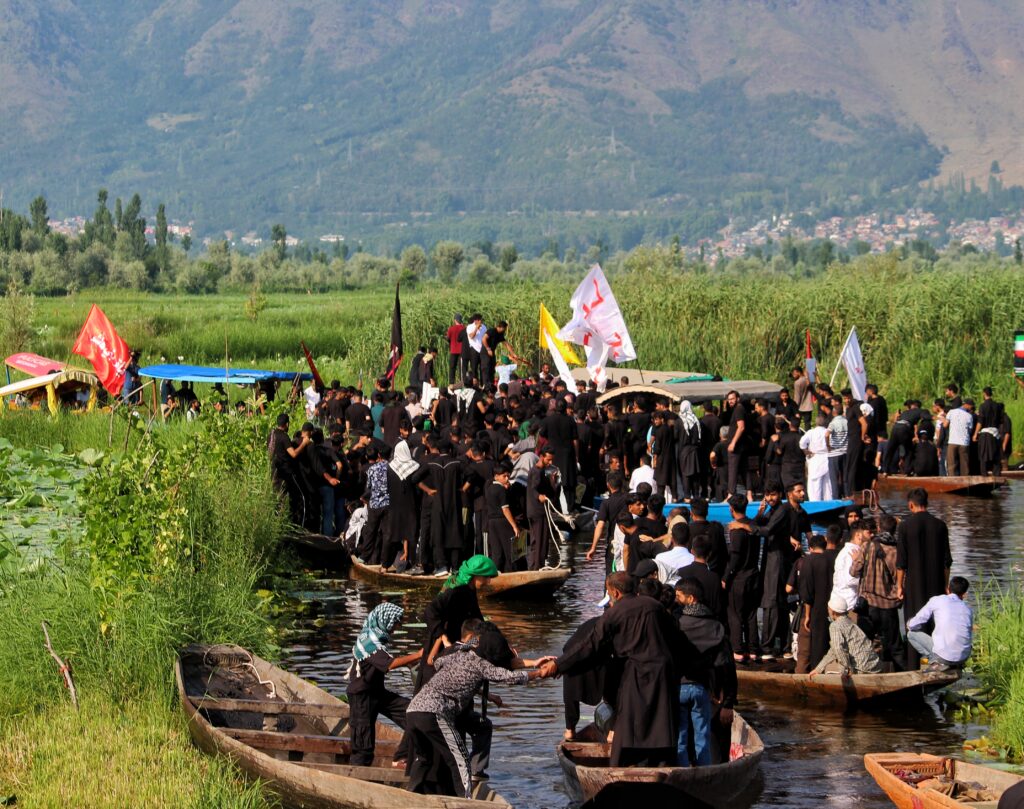


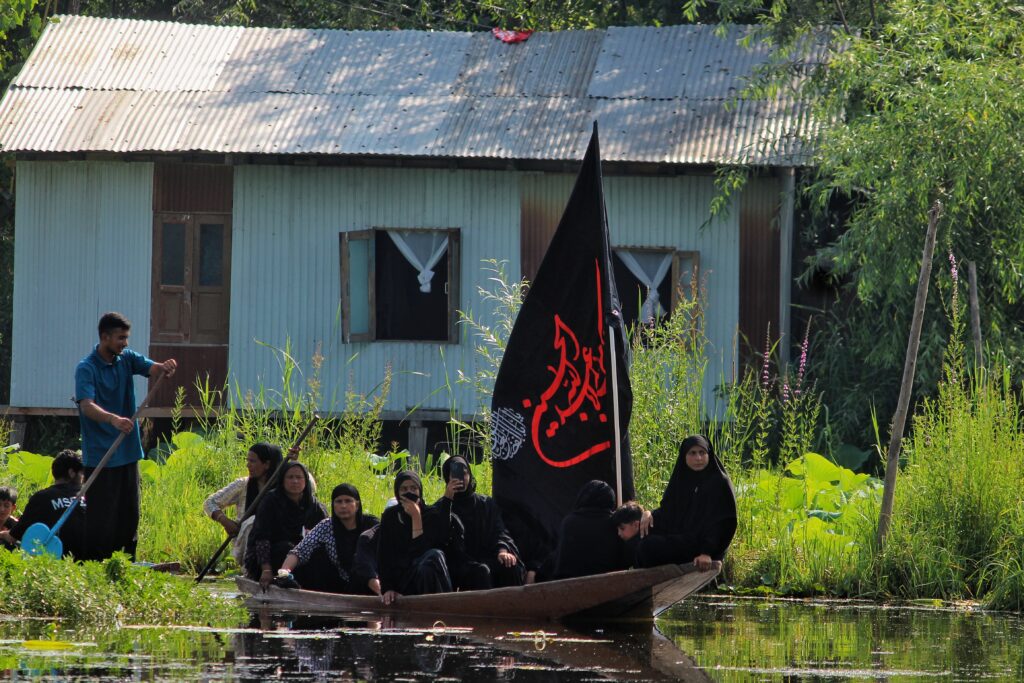

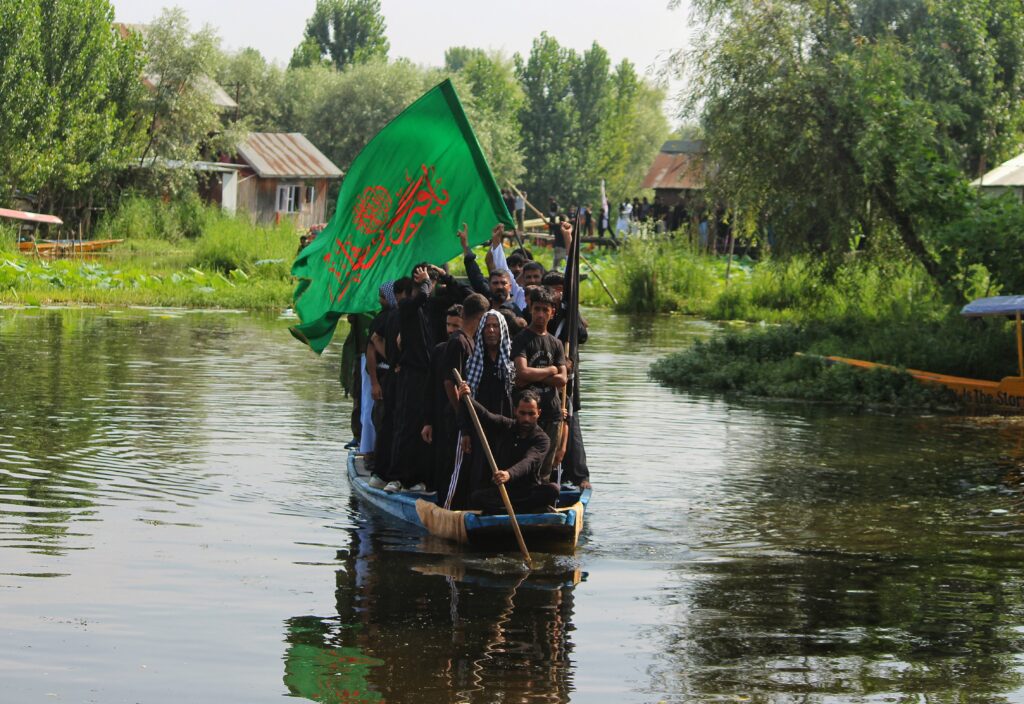
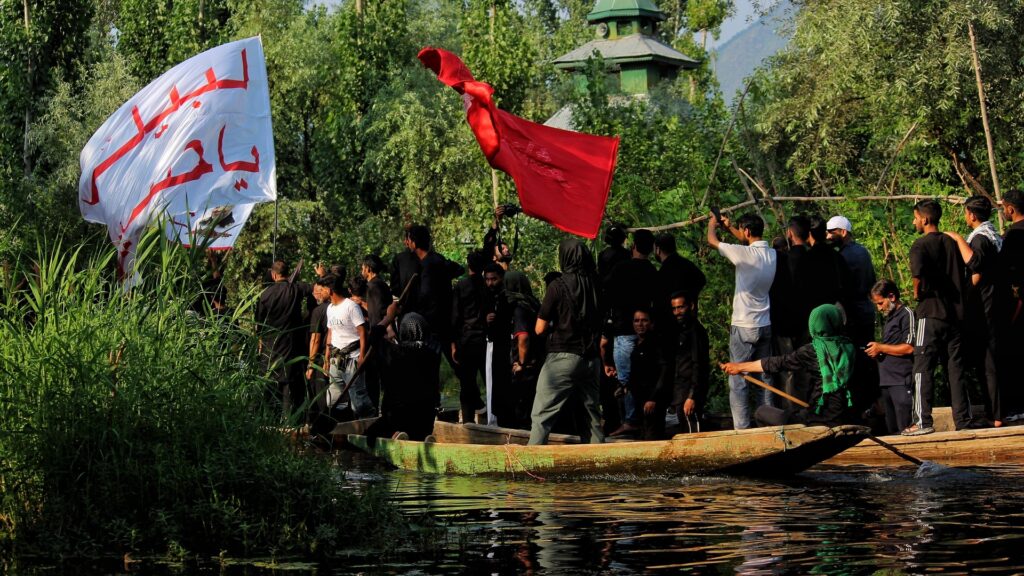
Ali Raza, a 58-year-old boatman who has taken part in the procession since childhood, says, “When we float on these waters, we feel connected to both our history and our land. This isn’t just a ritual; it’s our way of saying we are still here, our story still matters, and our grief still flows through generations. Even when our spaces shrink, this lake becomes our path.”
The Floating Muharram is not just about remembering the martyrdom of Imam Hussain. It’s about community, identity, and keeping centuries-old practices alive in changing times.
Fatima Bano, a mourner who joins the procession every year, says, “When I step onto the boat, it feels like stepping into the past. It’s not just about Imam Hussain; it’s about the people of Kashmir holding on to something that could have easily been lost. The lake remembers us, even if the world forgets.”
This peaceful procession carries powerful symbolism. The water becomes a moving prayer hall, the boats become floating shrines, and the mourners become guardians of memory.
Hassan Ali, a 24-year-old first-time participant, the experience is deeply personal. “It’s not just a tradition we inherit—it’s something we live. When I row that boat, I feel I am part of something bigger than myself. The lake carries our sorrow, but it also carries our strength.”
By Numan Bhat and Suhaib Bhat
By Numan Bhat and Suhaib Bhat



